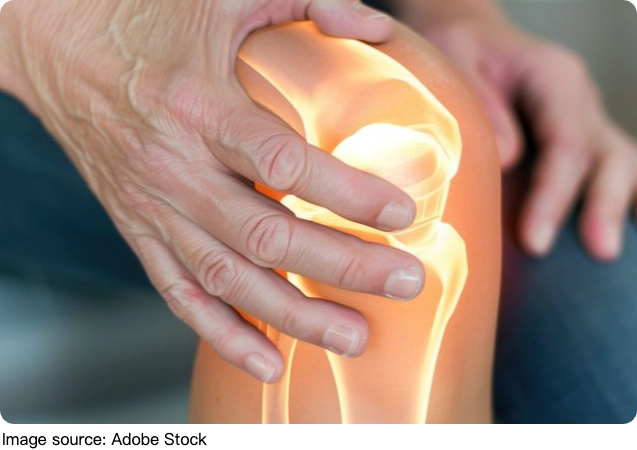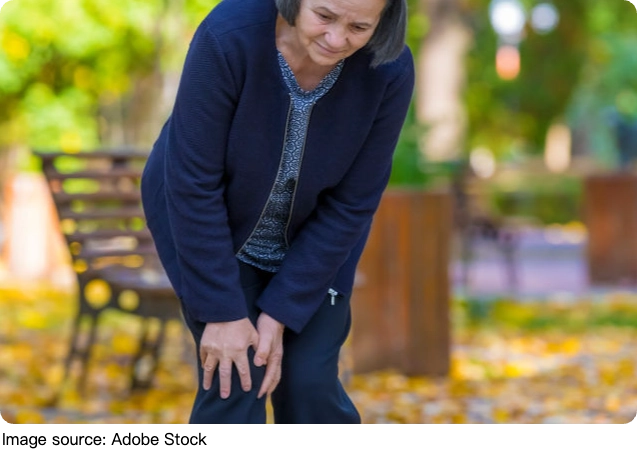Osteoarthritis Alert!

Osteoarthritis (OA) Pain Syndrome represents a prevalent and complex condition characterized by chronic joint pain, stiffness, and functional limitation resulting from progressive deterioration of cartilage and joint structures
As the most common form of arthritis, osteoarthritis disproportionately affects weight-bearing joints such as the knees, hips, and spine, but can involve any joint including those in the hands.
The pain syndrome associated with OA involves both nociceptive and neuropathic components, influenced by mechanical, inflammatory, and neurochemical changes in the joint microenvironment. Understanding these multifaceted mechanisms, symptomatology, and current treatment modalities is essential for optimizing patient care and improving quality of life.
Pathophysiology of Osteoarthritis Pain
Osteoarthritis is fundamentally a degenerative disorder characterized by the breakdown of articular cartilage, subchondral remodeling, synovial inflammation, and osteophyte formation. Cartilage degeneration leads to reduced shock absorption and increased friction between bones, causing microtrauma and pain.
Pain in OA is not solely due to mechanical wear but also driven by biochemical mediators released in the joint milieu. Inflammatory cytokines, such as interleukins and tumor necrosis factor-alpha, sensitize nerve endings enhancing pain perception. Central sensitization within the spinal cord and brain may amplify pain signals, leading to chronic discomfort even in absence of joint movement.
Risk Factors and Etiology
Multiple factors predispose individuals to develop osteoarthritis pain syndrome. Age remains the strongest risk factor as cartilage resilience diminishes over time. Joint injuries from trauma or repetitive stress accelerate cartilage degradation and predispose to early-onset OA.
Obesity imposes excessive mechanical load on joints, particularly knees and hips, and systemic inflammation associated with adiposity exacerbates disease progression.
Genetics contribute to susceptibility, with familial aggregation seen in hand and hip OA. Females exhibit higher prevalence, especially postmenopausal women, potentially due to hormonal influences on cartilage metabolism. Comorbidities including metabolic syndrome, diabetes, and prior inflammatory arthropathies such as rheumatoid arthritis can increase risk and complicate management.
Clinical Presentation
Patients with osteoarthritis pain syndrome typically present with joint pain exacerbated by activity and relieved by rest, stiffening particularly noted after inactivity or in the morning. Progressive limitation in joint range of motion and mechanical symptoms such as crepitus or joint instability are common. Swelling may be present due to synovial inflammation or effusion, though usually less pronounced than in inflammatory arthritis.
Pain severity varies extensively, with some experiencing mild discomfort while others suffer profound functional impairment affecting daily activities. Chronic pain can lead to secondary consequences including muscle weakness, gait abnormalities, sleep disturbances, depression, and reduced overall quality of life. Joints most commonly affected include knees, hips, hands (especially distal and proximal interphalangeal joints), lumbar spine, and cervical spine.
Diagnostic Approach
Diagnosis relies on clinical evaluation supplemented by imaging studies. Radiographs reveal hallmark changes such as joint space narrowing, osteophyte formation, subchondral sclerosis, and cysts. Magnetic resonance imaging (MRI) offers detailed visualization of cartilage, menisci, ligaments, and synovium, useful in early or complex cases. Laboratory testing typically excludes inflammatory or metabolic arthritis.

Management Strategies
Management of osteoarthritis pain syndrome is multidisciplinary focusing on pain relief, joint function preservation, and prevention of disability. Non-pharmacologic interventions constitute the foundation and include physical therapy emphasizing muscle strengthening, low-impact aerobic exercise, weight reduction, and patient education on joint protection.
Pharmacologic treatments incorporate acetaminophen and nonsteroidal anti-inflammatory drugs (NSAIDs) for symptomatic control, though long-term use warrants caution due to side effects. Topical analgesics, intra-articular corticosteroids, and hyaluronic acid injections provide additional options in select cases. Emerging therapies targeting inflammatory pathways and nerve signaling are under investigation.
Dr. Robert Brophy, MD, states "We know that treatment for osteoarthritis is not a one-size-fits-all approach, and fortunately there are a number of treatment options for orthopaedic surgeons to consider with their patients to help alleviate pain and increase mobility."
Osteoarthritis Pain Syndrome encapsulates the chronic, multifactorial pain experience that accompanies joint degeneration. The intricate pathophysiological mechanisms involve cartilage breakdown, bones changes, inflammation, and neural sensitization.
Risk factors ranging from aging and obesity to genetics heighten susceptibility to symptomatic disease. Clinically, patients endure variable pain intensity, stiffness, and functional decline, significantly impairing quality of life.


